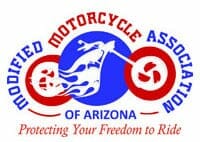
RIDING FREE FROM DC:
Your Weekly Biker Bulletin from Inside the Beltway
Your Motorcycle Riders Foundation team in Washington, D.C. is pleased to provide our members with the latest information and updates on issues that impact the freedom and safety of American street motorcyclists. Count on your MRF to keep you informed about a range of matters that are critical to the advancement of motorcycling and its associated lifestyle. Published weekly when the U.S. Congress is in session.
Rules on Rules
At the end of last week, Secretary of Transportation Elaine Chao announced she had signed a “rule on rules” that will ensure the department’s regulations aren’t too complicated, out of date, or contradictory.
The new Transportation Department action formalized a Trump administration requirement that for each regulatory step a department takes, it has to undertake two deregulatory moves.
When it comes to investigating suspected wrongdoing and enforcing its regulations, the new rules also require the department “where feasible, foster greater private-sector cooperation in enforcement.”
“This effort enhances the Department’s regulatory process by providing greater transparency and strengthening due process in enforcement actions,” Chao said in a statement.
While in general, we applaud the move to streamline the rulemaking process and update outdated regulations, we are also wary of the impact this policy change may have on regulations related to autonomous vehicles. Currently, the government has been slow to roll out rules surrounding the deployment of autonomous vehicles, and this step by the Secretary may further curtail regulations surrounding so-called “self-driving cars.”
We at the MRF will continue to monitor the rulemaking process at the Department of Transportation and demand that Congress have a say in the deployment of these new vehicles to ensure that all road users are protected.
Final In-person MAC Meeting Held
On Tuesday, your MRF attended the final Motorcyclist Advisory Council (MAC) meeting at the Federal Highway Administration (FHWA). The members of the council have been tasked with creating recommendations to advise the FHWA on areas concerning infrastructure and issues related to motorcyclist safety such as barrier design, road design, construction, maintenance practices and the implementation of the intelligent transportation system (ITS).
Mike Griffith, Director of Safety technologies with FHWA, advised the group that they should finalize all recommendations to be sent to the agency by the end of January at the request of the Secretary of Transportation. The Secretary of the DOT has been reviewing all of the agency’s advisory councils and their functions to ensure that any or all recommendations are properly reviewed and fit in with the new rules adopted by the DOT.
While the final draft is not complete at this time, we are pleased that the council carefully and thoughtfully addressed the issue that most of us motorcyclists would like to see addressed. You will be pleased to know that they addressed everything from utilizing high friction pavement in some curves, uneven pavement and drop-offs, road construction grooving, steel plates, tar snakes (tar seals), chips and seal paving to road barriers. Notably, the council is recommending that road designers consider adding motorcycle-specific road barriers like the ones that have been studied and implemented in Europe that prevent and reduced motorcyclists’ fatalities and serious injuries.

The last category of the council’s scope of work is addressing the inclusion of motorcycles in the architecture and implementation of any intelligent transportation system. Specifically, the recommendations address the vehicle to infrastructure (V2I) issues to ensure that motorcycles are appropriately accounted for and can be detected by any ITS technology that will be utilized. We are hoping by ensuring that we are accounted for in the planning stages that we can avoid infrastructure issues that we have experienced in the past that were deployed without the consideration of motorcycles on the road (Example: 30 plus states have dead red bills).
As always, we will share the final letter that will be sent to the DOT when it is made available to the public. I also want to acknowledge and commend Pennsylvania MRF State Rep, Andy Kelly, for traveling to DC over the past two years to attend all of the in-person MAC meetings. Motorcyclists in the seats signals that we will continue to be watchdogs for motorcyclists and advocate our interests.
FCC Votes to Split Auto Safety Spectrum
Speaking of ITS…
The Federal Communications Commission (FCC) moved toward letting mobile devices take over airwaves long assigned to carmakers for vehicle safety, advancing a plan opposed by highway officials focused on cutting crash deaths. On a 5-0 vote on Thursday proposed devoting most of the auto-safety airwaves to broadband uses including Wi-Fi for routers, with most of the remainder of the swath going to a new cellular connected-vehicle technology. The measure needs a second vote to become effective, following a comment period.
A little background on the 5.9 dedicated spectrum frequencies was reserved two decades ago by the FCC to link cars, roadside beacons, and traffic lights into a seamless wireless communication web to help avoid collisions and alert drivers to road hazards, among other uses. The FCC is taking that stance that since little has been done to start utilizing that spectrum for its intended purpose that they want to open in up to cellular and wifi technology while transportation safety advocated and the Secretary of Transportation, Elaine Chao, oppose the proposal.
We at the MRF will continue to monitor the FCC’s actions of eliminating the vehicle safety spectrum as the proposal moves forward. The move by the FCC will hurt the future of connected infrastructure and the safety of motorcyclists as we continue to move to higher levels of automation on our nation’s roadways. For example, this frequency would signal to traffic lights that a motorcyclist is approaching an intersection and then tell any vehicles approaching the same intersection that a motorcycle is approaching from the other direction. The theory of this example is a fully connected transportation system may help eliminate those left-hand crashes in intersections that motorcyclists are all too familiar with.
Standing Update
We are currently at 121 cosponsors from 42 states and one territory for H. Res 255, the motorcyclist profiling resolution. As 2019 is winding down on Capitol Hill, your MRF is still on the hill, taking meetings and seeking new cosponsors. If you want to see if your Representative is a cosponsor, you can review the list here.
About Motorcycle Riders Foundation
The Motorcycle Riders Foundation (MRF) provides leadership at the federal level for states’ motorcyclists’ rights organizations as well as motorcycle clubs and individual riders. The MRF is chiefly concerned with issues at the national and international levels that impact the freedom and safety of American street motorcyclists. The MRF is committed to being a national advocate for the advancement of motorcycling and its associated lifestyle and works in conjunction with its partners to help educate elected officials and policymakers in Washington and beyond.
